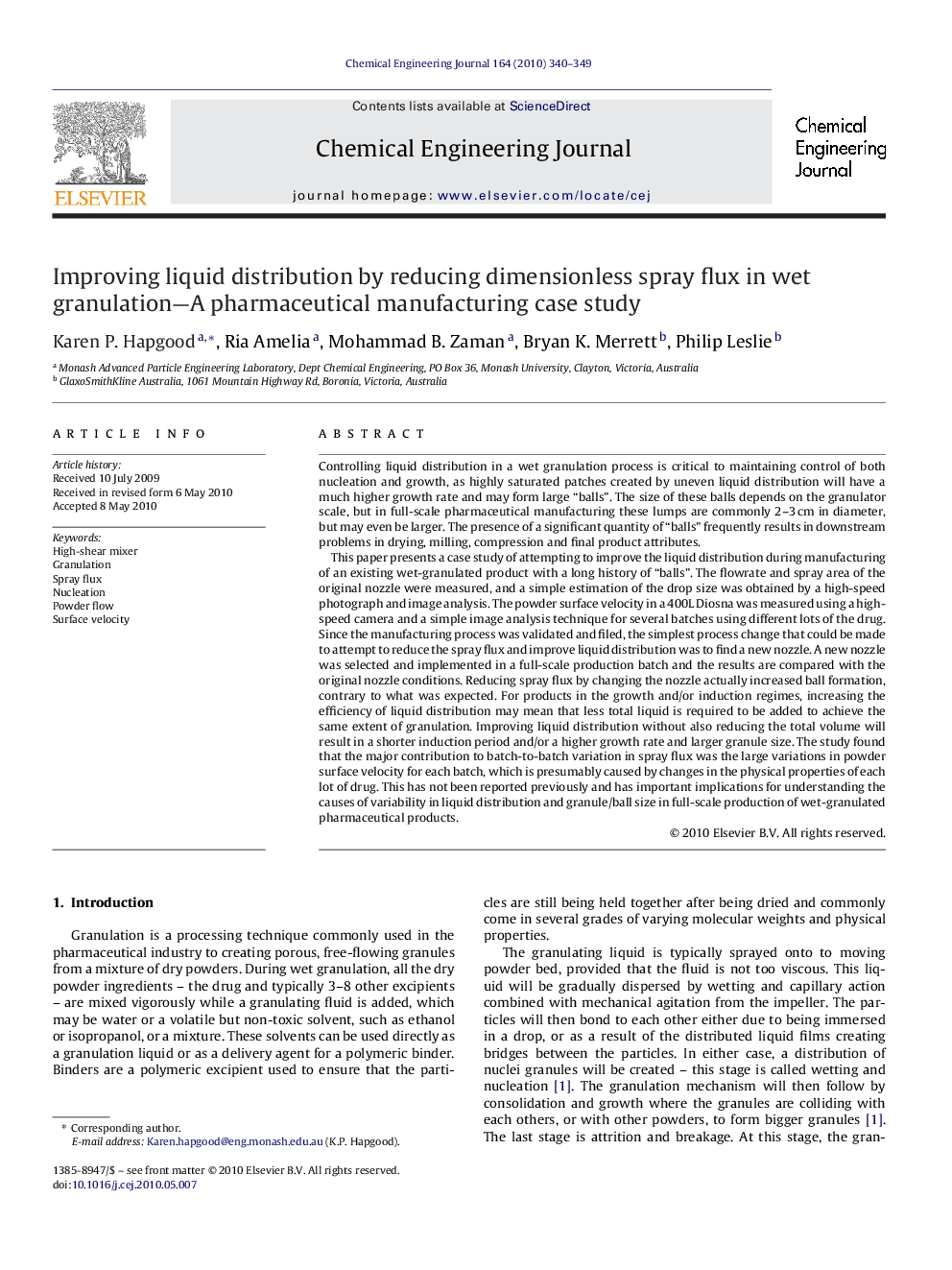| کد مقاله | کد نشریه | سال انتشار | مقاله انگلیسی | نسخه تمام متن |
|---|---|---|---|---|
| 151699 | 456478 | 2010 | 10 صفحه PDF | دانلود رایگان |

Controlling liquid distribution in a wet granulation process is critical to maintaining control of both nucleation and growth, as highly saturated patches created by uneven liquid distribution will have a much higher growth rate and may form large “balls”. The size of these balls depends on the granulator scale, but in full-scale pharmaceutical manufacturing these lumps are commonly 2–3 cm in diameter, but may even be larger. The presence of a significant quantity of “balls” frequently results in downstream problems in drying, milling, compression and final product attributes.This paper presents a case study of attempting to improve the liquid distribution during manufacturing of an existing wet-granulated product with a long history of “balls”. The flowrate and spray area of the original nozzle were measured, and a simple estimation of the drop size was obtained by a high-speed photograph and image analysis. The powder surface velocity in a 400L Diosna was measured using a high-speed camera and a simple image analysis technique for several batches using different lots of the drug. Since the manufacturing process was validated and filed, the simplest process change that could be made to attempt to reduce the spray flux and improve liquid distribution was to find a new nozzle. A new nozzle was selected and implemented in a full-scale production batch and the results are compared with the original nozzle conditions. Reducing spray flux by changing the nozzle actually increased ball formation, contrary to what was expected. For products in the growth and/or induction regimes, increasing the efficiency of liquid distribution may mean that less total liquid is required to be added to achieve the same extent of granulation. Improving liquid distribution without also reducing the total volume will result in a shorter induction period and/or a higher growth rate and larger granule size. The study found that the major contribution to batch-to-batch variation in spray flux was the large variations in powder surface velocity for each batch, which is presumably caused by changes in the physical properties of each lot of drug. This has not been reported previously and has important implications for understanding the causes of variability in liquid distribution and granule/ball size in full-scale production of wet-granulated pharmaceutical products.
Journal: Chemical Engineering Journal - Volume 164, Issues 2–3, 1 November 2010, Pages 340–349